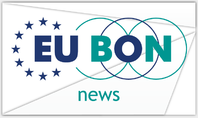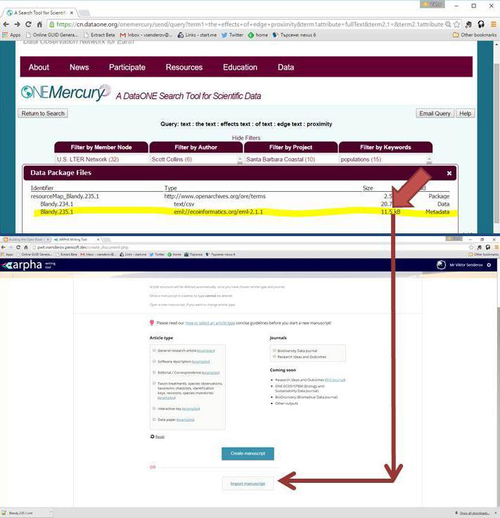
Data collection and analysis are at the core of modern research, and often take months or even years during which researchers remain uncredited for their contribution. A new plugin to a workflow previously developed by the Global Biodiversity Information Facility (GBIF) and Pensoft, and tested with datasets shared through GBIF and DataONE, now makes it possible to convert metadata into a manuscript for scholarly publications, with a click of a button.
Pensoft has currently implemented the feature for biodiversity, ecological and environmental data. Such records are either published through GBIF or deposited at DataONE, from where the associated metadata can be converted directly into data paper manuscripts within the ARPHA Writing Tool, where the authors may edit and finalize it in collaboration with co-authors and peers and submit it to the Biodiversity Data Journal (BDJ) with another click. Until now, the GBIF metadata have been exported into an RTF file. The new feature will be also part of future Pensoft projects, including the recently announced Research Ideas & Outcomes (RIO) Journaland the forthcoming Ecology and Sustainability Data Journal.

Metadata can be directly downloaded from the repository site (example with ONEMercury from DataONE) and then imported via the ARPHA Writing tool; Credit: ONEMercury, a tool by DataONE
The concept of the data paper was introduced in the early 2000's by the Ecological Society of America in order to solve issues of handling big data and to make the metadata and the corresponding datasets discoverable and citable. It was then brought to the attention of the biodiversity community in 2011 as a result of a joint GBIF and Pensoft project and later implemented in the routine publishing process in all Pensoft journals.
Since then, Pensoft has been working with GBIF, and subsequently DataONE to automate the process of converting metadata into a human-readable data paper format. The novel workflow means that with only a couple of clicks, publishers of datasets on either GBIF, DataONE or any other portal storing metadata in the same format, may submit a manuscript for peer-review and open access citable publication in BDJ.
The process is simple, yet it brings a lot of benefits. Publishing data does not only mean a citable publication and, thus, credit to the authors and the repository itself, but it also provides the option to improve your work and collect opinion though peer-review. BDJ also shortens the distance between "narrative (text)" and "data" publishing.
"Metadata descriptions (e.g., data about the data) are of primary importance for data dissemination, sharing and re-use, as they give essential information on content, scope, purpose, fitness for use, authorship, usage rights, etc. to any potential user. Authoring detailed metadata in repositories can seem a tedious process, however DataONE users will now benefit from direct export of already created metadata into data paper manuscripts and have even better exposure of their work through discoverability mechanisms and scholarly citations," commented Dr Amber Budden, DataONE Director for Community Engagement and Outreach
"It is great to reap the fruits of a process that started back in 2010. The automated streamlining of biodiversity data between repositories and publisher is an elegant feature that makes publishing a data paper an easy and rewarding process to crown scientists data collection efforts and ensure its use and re-use," added Prof. Lyubomir Penev, Managing Director of Pensoft.
More detailed information on how data authors could use the workflow can be found on the Pensoft blog.
References:
Chavan V, Penev L (2011) The data paper: a mechanism to incentivize data publishing in biodiversity science. BMC Bioinformatics. 12(Suppl 15):S2. DOI: 10.1186/1471-2105-12-S15-S2
The work has been partially supported by the EC-FP7 EU BON project (ENV 308454, Building the European Biodiversity Observation Network) and the ITN Horizon 2020 project BIG4(Biosystematics, informatics and genomics of the big 4 insect groups: training tomorrow's researchers and entrepreneurs), under Marie Sklodovska-Curie grant agreement No. 542241.




 RSS news
RSS news Print this article
Print this article
